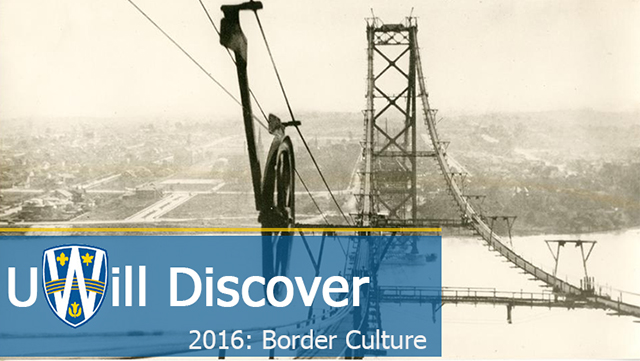
Is a first year multi-activity orientation program effective at developing relationships between students, their peers, staff and faculty?
Type of Proposal
Oral presentation
Faculty
Faculty of Human Kinetics
Faculty Sponsor
David M. Andrews
Proposal
ABSTRACT First year orientation activities at post-secondary institutions serve the purpose of facilitating peer-to-peer and peer-to-instructor relationships [1,2]. It has been shown that the creation of these relationships is positively correlated with increased student retention rates [2-4]. Several studies have evaluated activities pertaining to outdoor/physical education, small focus groups, program and faculty information sessions, and facility orientation to try and determine which are most effective in increasing student outcomes [1-4]. However, little research has been conducted to date regarding the evaluation and effectiveness of multi-activity programs. Therefore, the primary purpose of this study is to assess the effectiveness of first year orientation activities (e.g., peer mentoring, outdoor team building) in an Ontario university Kinesiology program for developing relationships between first year students and others within the department. It is hoped that by improving these relationships, there will be an associated long term increase in academic achievement and retention rates. Each winter semester over the next five years, first year undergraduate students will complete an online survey regarding their orientation experiences from the previous fall. The survey will ask students to reflect on their first year orientation experiences and provide feedback on how effective they thought each activity was at orienting them to the campus, developing relationships among their peers, staff and faculty, and other success criteria. Quantitative results will be summarized using descriptive statistics and stratified based on factors such as year and sex. Qualitative responses will be assessed using open and axial coding techniques using QSR Nvivo software. The results of these analyses will be used to modify orientation activities in future years, with the intent of improving relationships between students, staff, and faculty on a continual basis. The first set of analyzed data regarding Fall 2015 orientation will be available at the time of UWill Discover in March. REFERENCES [1] Bell, B. J. (2006). Wilderness orientation: Exploring the relationship between college preorientation programs and social support. Journal of Experiential Education, 29(2), 145-167. [2] Power, R. K., Miles, B., Peruzzi, A., & Voerman, A. (2011). Building bridges: A practical guide to developing and implementing a subject-specific peer-to-peer academic mentoring program for first-year higher education students. Asian Social Science, 7(11), 75-80. [3] Price, D. V., & Lee, M. (2005). Learning communities and student success in postsecondary education [PDF]. New York City: MDRC. [4] Wolfe, B. D., & Kay, G. (2001). Perceived impact of an outdoor orientation program for first-year university students. Journal of Experiential Education, 34(1), 19-34.
Start Date
29-3-2016 2:30 PM
End Date
29-3-2016 3:50 PM
Is a first year multi-activity orientation program effective at developing relationships between students, their peers, staff and faculty?
ABSTRACT First year orientation activities at post-secondary institutions serve the purpose of facilitating peer-to-peer and peer-to-instructor relationships [1,2]. It has been shown that the creation of these relationships is positively correlated with increased student retention rates [2-4]. Several studies have evaluated activities pertaining to outdoor/physical education, small focus groups, program and faculty information sessions, and facility orientation to try and determine which are most effective in increasing student outcomes [1-4]. However, little research has been conducted to date regarding the evaluation and effectiveness of multi-activity programs. Therefore, the primary purpose of this study is to assess the effectiveness of first year orientation activities (e.g., peer mentoring, outdoor team building) in an Ontario university Kinesiology program for developing relationships between first year students and others within the department. It is hoped that by improving these relationships, there will be an associated long term increase in academic achievement and retention rates. Each winter semester over the next five years, first year undergraduate students will complete an online survey regarding their orientation experiences from the previous fall. The survey will ask students to reflect on their first year orientation experiences and provide feedback on how effective they thought each activity was at orienting them to the campus, developing relationships among their peers, staff and faculty, and other success criteria. Quantitative results will be summarized using descriptive statistics and stratified based on factors such as year and sex. Qualitative responses will be assessed using open and axial coding techniques using QSR Nvivo software. The results of these analyses will be used to modify orientation activities in future years, with the intent of improving relationships between students, staff, and faculty on a continual basis. The first set of analyzed data regarding Fall 2015 orientation will be available at the time of UWill Discover in March. REFERENCES [1] Bell, B. J. (2006). Wilderness orientation: Exploring the relationship between college preorientation programs and social support. Journal of Experiential Education, 29(2), 145-167. [2] Power, R. K., Miles, B., Peruzzi, A., & Voerman, A. (2011). Building bridges: A practical guide to developing and implementing a subject-specific peer-to-peer academic mentoring program for first-year higher education students. Asian Social Science, 7(11), 75-80. [3] Price, D. V., & Lee, M. (2005). Learning communities and student success in postsecondary education [PDF]. New York City: MDRC. [4] Wolfe, B. D., & Kay, G. (2001). Perceived impact of an outdoor orientation program for first-year university students. Journal of Experiential Education, 34(1), 19-34.
